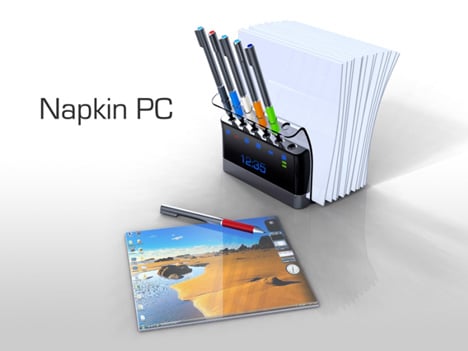It’s too perfect. I can’t belive it that it has so many cutting edge functions as the company says.

[youtube=http://www.youtube.com/v/SywgwUX8RGM]
This is a demo of multi-point interface.
Multi-touch means that you use multiple fingers
Multi-point means that you use multiple mice :-)
We have come across that cellulose based paper can produce a bending displacement in the presence of electric field. This smart cellulose is termed Electro-Active Paper (EAPap). It can produce a large bending displacement with low actuation voltage and low power consumption.



This new double-sided multi-touch mobile interaction model enables intuitive finger gestures for manipulating 3D objects and user interfaces on a 2D screen. Although multi-touch input enables scrolling and the zooming of a document, its manipulation is constrained to two dimensions over the horizontal or vertical planes of a mobile device’s 2D touch screen. By adding touch inputs from the device’s back side, the degree of freedom for manipulation can be extended to a pseudo three dimensions.
Source: E.E. Shen, S.D. Tsai, H. Chu, Y.J. Hsu, and C.E. Chen, “Double-side multi-touch input for mobile devices,” Proceedings of the 27th international conference extended abstracts on Human factors in computing systems, Boston, MA, USA: ACM, 2009, pp. 4339-4344. (Poster in PDF format is available at NTU Ubicomp Laboratory)
See also:
Maximum number of fingers to detect = Display's diagonal size (in inch) / 2
F. Wang and X. Ren, "Empirical evaluation for finger input properties in multi-touch interaction," in Proceedings of the 27th international conference on Human factors in computing systems Boston, MA, USA: ACM, 2009.
I found it at Demand Evolution via Multitouch + NUI. Original source introduces low cost 50” multi-touch kits, but this 3D musical instrument is more impressive.
LimpiDual Touch from Harashima & Naemura lab at the University of Tokyo
Related Links:
Fingertapps started in late 2007 after answering a market call to provide organisations with a commercially viable way to utilise touch and multi-touch tools to make the next step in their…